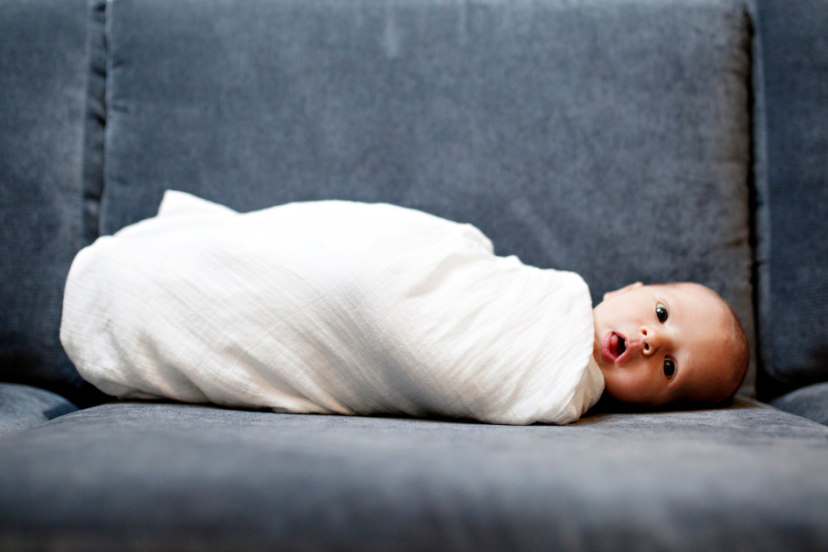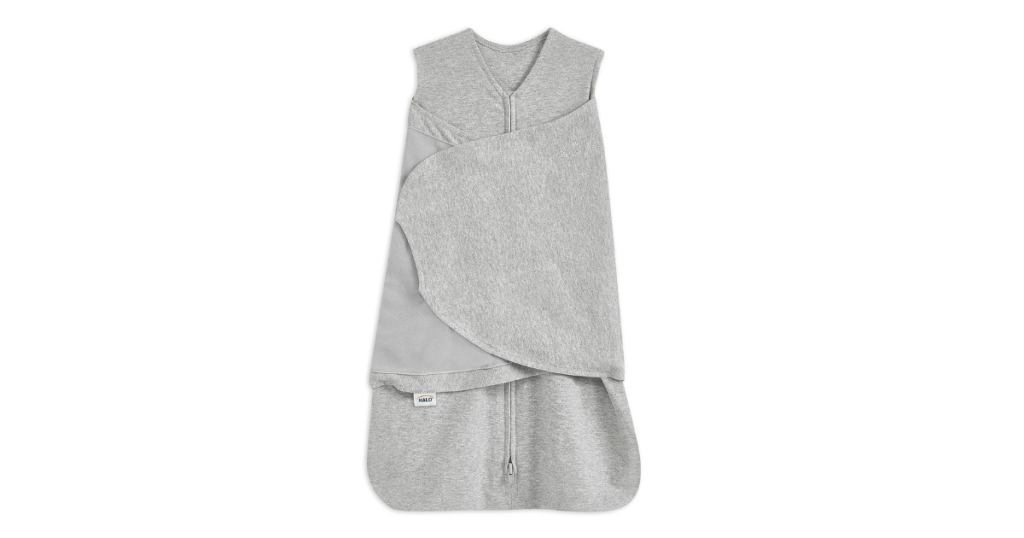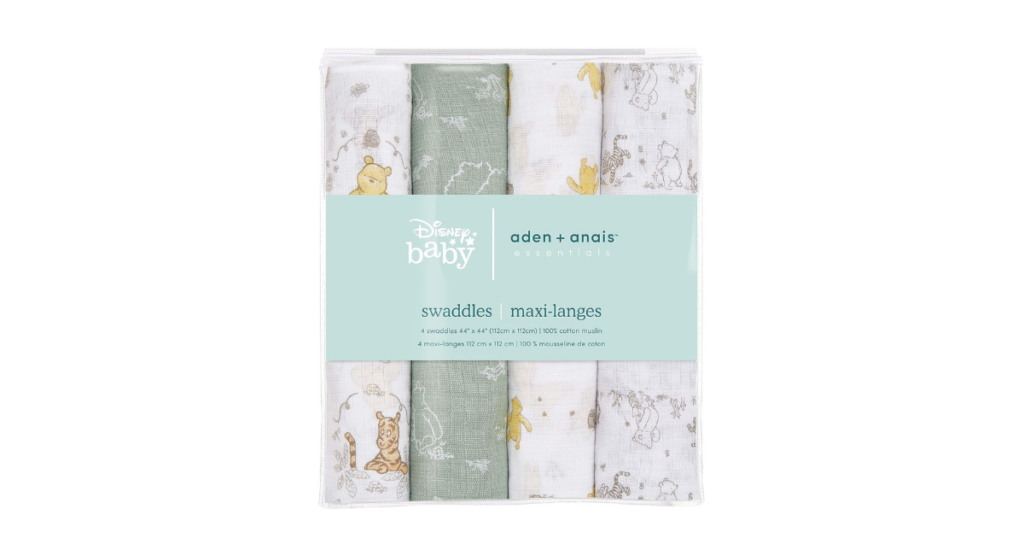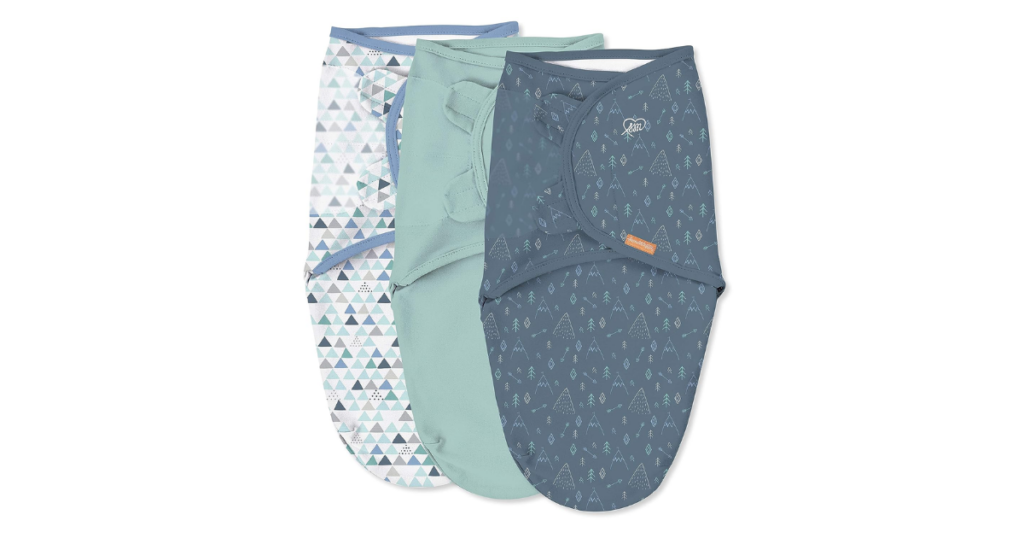How Many Swaddles Do I Need? – Your Swaddling Guide
Swaddling has been a cherished tradition in the world of parenting for centuries. It’s a simple yet powerful technique that involves snugly wrapping a baby in a blanket or cloth, with only their head exposed. But what makes swaddling so essential for newborns and infants? In this section, we’ll delve into the significance of swaddles, exploring the reasons why this age-old practice remains an integral part of caring for a baby.
The Comfort of the Womb
Recreating the Womb
Imagine the cozy cocoon of warmth and security that a baby experiences in the womb. Swaddling seeks to replicate this comforting environment, providing infants with a sense of familiarity. The snug wrap around their tiny bodies can alleviate anxiety and fussiness, helping them sleep more soundly.
Reducing Startle Reflex
Newborns have a strong startle reflex, causing their arms and legs to flail unexpectedly. Swaddling helps to suppress this reflex, preventing sudden awakenings and ensuring uninterrupted sleep for both baby and parents.
Enhanced Sleep Patterns
Longer and Deeper Sleep
Swaddling can extend the duration of a baby’s sleep. When wrapped snugly, infants are less likely to wake themselves up with involuntary movements, leading to more extended and deeper sleep cycles.
Better Nap Regulation
Swaddles can also help regulate your baby’s napping patterns. By promoting longer stretches of sleep, your little one will be more likely to nap when needed, which contributes to their overall well-being.
Reduced Risk of Sudden Infant Death Syndrome (SIDS)
Safe Sleep Practices
One of the most crucial aspects of parenting is ensuring the safety of your baby during sleep. Swaddling, when done correctly, can play a role in SIDS prevention. It keeps loose bedding away from the baby’s face and maintains a safe sleeping position.
Easier Transition to Sleep Sacks
Gradual Independence
As your baby grows, they’ll eventually outgrow swaddles. However, swaddling can make the transition to sleep sacks (wearable blankets) easier. Babies who are used to the secure feeling of swaddling may adjust more smoothly to sleep sacks.
Swaddling isn’t just an age-old tradition; it’s a practice deeply rooted in the well-being of newborns and infants. By recreating the womb’s comfort, promoting better sleep, reducing the risk of SIDS, and easing the transition to sleep sacks, swaddling remains a valuable tool for parents. Understanding the importance of swaddles empowers caregivers to provide their little ones with the comfort and security they need during those crucial early months.
Stay tuned for more insights on swaddles, including how to determine the right quantity of swaddles for your baby’s needs.
Benefits of Swaddling for Babies
Swaddling, an age-old practice, has endured through generations of parenting. The art of snugly wrapping a baby in a blanket or cloth has proven to offer numerous benefits. In this comprehensive guide, we’ll explore the multifaceted advantages of swaddling for babies, shedding light on why this tradition remains popular among caregivers worldwide.
The Comfort of Security
Recreating the Womb’s Embrace
Swaddling provides newborns with the comforting sensation of being in the womb. The snug wrap around their little bodies mimics the close quarters they were accustomed to for nine months, helping them feel secure and content.
Reduced Anxiety and Fussiness
When babies feel secure, they tend to be less anxious and fussy. Swaddling can soothe a crying infant, making it a valuable tool for calming your little one.
Promoting Sound Sleep
Longer Sleep Duration
One of the most significant benefits of swaddling is its positive impact on a baby’s sleep patterns. Wrapped snugly, babies are less likely to be disturbed by their own startle reflex, leading to longer and more restful sleep.
Safer Sleep
Swaddling helps maintain a safe sleeping position for babies. It reduces the risk of infants accidentally rolling onto their stomachs, which is associated with Sudden Infant Death Syndrome (SIDS).
Easing the Transition
Smooth Transition to Sleep Sacks
As babies grow, they’ll eventually outgrow swaddling. However, swaddling can make the transition to sleep sacks (wearable blankets) more manageable. Babies accustomed to the secure feeling of swaddling may adjust more readily to sleep sacks.
Better Napping Habits
Improved Nap Regulation
Swaddling can contribute to better nap regulation. By encouraging longer stretches of sleep, babies are more likely to nap when needed, promoting a healthier sleep routine.
Reduced Scratching and Self-Awareness
Preventing Scratching
Babies have a natural tendency to scratch their faces, especially in the early weeks. Swaddling can prevent them from inadvertently scratching themselves, keeping their delicate skin protected.
Limiting Self-Awareness
Newborns often startle themselves with sudden arm and leg movements. Swaddling limits these movements, allowing your baby to remain in a calmer and more peaceful state.
Factors to Consider When Swaddling Your Baby
Swaddling is a time-honored practice that offers comfort and security to infants. However, determining the ideal number of swaddles you need for your baby involves considering several factors. In this section, we’ll explore these essential factors to help you make informed decisions about swaddling.
Baby’s Age and Weight
Newborns Have Different Needs
Newborns require more frequent swaddling than older babies. Their tiny bodies often need swaddles that are specifically designed for their size. Keep in mind that as your baby grows, you may need to adjust the type of swaddles you use.
Weight Matters
Consider your baby’s weight when choosing swaddles. Some swaddles are designed to accommodate a wide range of weights, while others are more specialized. Swaddles that provide a snug fit are essential for your baby’s safety and comfort.
Laundry Frequency
How Often Do You Plan to Wash?
Your laundry habits play a significant role in determining how many swaddles you need. If you prefer doing laundry daily, you can get away with a smaller number of swaddles. However, if you plan to do laundry less frequently, you’ll need a more extensive collection to ensure your baby always has a clean swaddle.
Stain and Wear Considerations
Babies can be messy, and swaddles often bear the brunt of spills and accidents. Having a few extra swaddles on hand can be a lifesaver when dealing with unexpected stains or wear and tear.
Seasonal Considerations
Adapting to the Weather
The climate in your area should influence your swaddle choices. Consider using lighter, breathable swaddles in hot weather to prevent overheating. Conversely, thicker, warmer swaddles are suitable for colder seasons.
Layering Options
Layering is key when it comes to seasonal swaddle choices. You can use lighter swaddles as a base layer and add warmer blankets or sleep sacks on top when needed. This flexibility ensures your baby is comfortable year-round.
The Versatility of Swaddles
Swaddles are incredibly versatile, and you can adapt them to various situations and needs. They serve as blankets, stroller covers, nursing covers, and more, making them indispensable for parents.
A Recommended Quantity of Swaddles for Different Stage
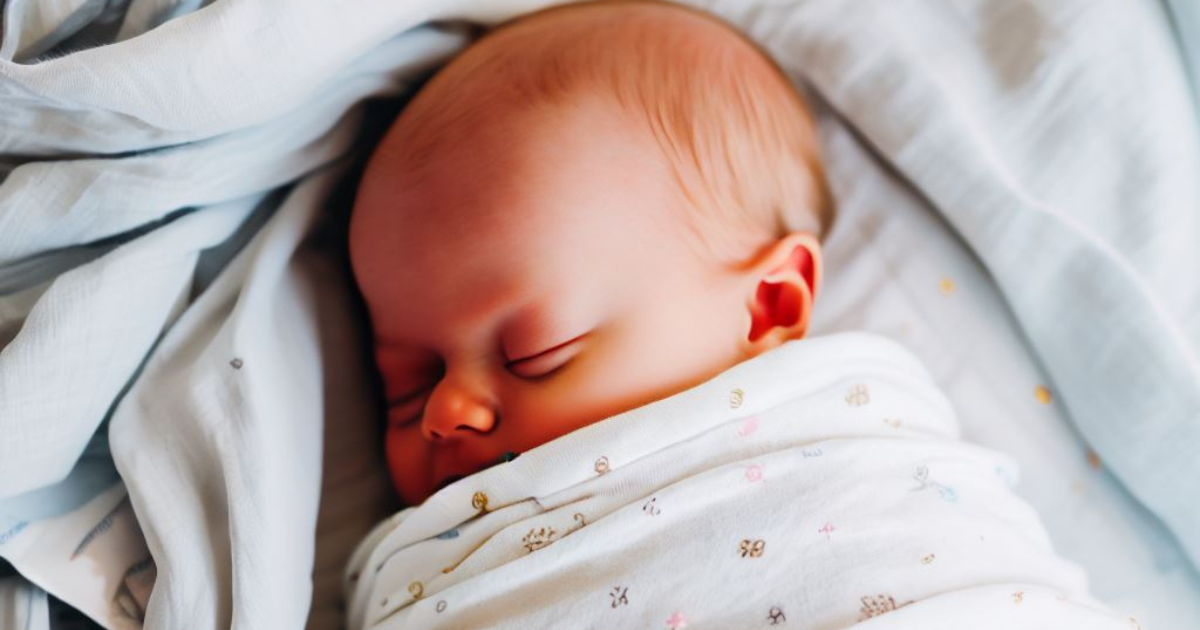
Swaddles are a parenting essential, offering comfort and security to babies during their early months. However, determining the right quantity of swaddles can be challenging, as it varies depending on your baby’s age and stage of development. In this section, we’ll break down the recommended quantity of swaddles for different stages of your baby’s growth.
Newborn Stage (0-2 months)
The Swaddle-Intensive Phase
Newborns are typically the most swaddle-dependent. During this stage, you’ll find yourself reaching for swaddles quite frequently. Here’s a recommended quantity:
– 5-7 Swaddles: Newborns tend to go through swaddles quickly due to frequent feedings, diaper changes, and spit-ups. Having a week’s supply ensures you always have clean swaddles on hand.
– Specialized Newborn Swaddles: Consider using specialized swaddles designed for newborns. These often have features like easy Velcro closures or snaps to keep your baby secure.
Infant Stage (2-6 months)
A Gradual Decrease
As your baby transitions from the newborn stage into infancy, their swaddle needs will begin to decrease. However, swaddling can still play a significant role in promoting sleep and reducing the startle reflex. Here’s a suggested quantity:
– 3-5 Swaddles: During this stage, you can reduce the number of swaddles in your rotation. Three to five swaddles should be sufficient, as your baby’s sleep patterns become more regular.
– Transition Swaddles: Consider using transition swaddles that allow your baby’s arms to be free while still providing a snug wrap for the torso. This can help ease the transition to sleeping without swaddling.
Beyond 6 Months
Gradual Independence
Around six months, babies often begin showing signs of increased mobility and a desire for more independence. Swaddling becomes less necessary, but you may still find it useful in specific situations. Here’s what to consider:
– 2-3 Swaddles: By this stage, you’ll primarily use swaddles for naps or when your baby needs extra comfort. Two to three swaddles should suffice for occasional use.
– Sleep Sacks: As your baby becomes more active, consider transitioning to sleep sacks or wearable blankets. These provide warmth and security without restricting movement.
Caring for Swaddles: Tips for Maintaining Softness and Durability
Swaddles are a beloved staple in a parent’s toolkit, providing comfort and security to babies. To ensure that your swaddles remain gentle on your baby’s delicate skin and stand the test of time, proper care is essential. In this section, we’ll explore essential tips for maintaining the softness and durability of your swaddles.
Understand Swaddle Fabrics
Choose Quality Materials
Swaddles come in various fabrics, including muslin, flannel, and jersey. It’s crucial to understand the properties of these materials. Muslin is lightweight and breathable, making it ideal for warm weather, while flannel provides extra warmth for colder months. Jersey fabric is stretchy and comfortable, perfect for a snug swaddle.
Washing Guidelines
Follow Manufacturer Instructions
Always read and follow the care instructions provided by the manufacturer. They will specify the recommended washing temperature, detergent, and any special care considerations.
Gentle Cycle
Use a gentle cycle on your washing machine to prevent excessive wear and tear on the fabric. Harsh cycles can cause pilling and reduce the swaddle’s softness.
Mild Detergent
Opt for a mild, baby-friendly detergent to avoid harsh chemicals that might irritate your baby’s skin. Avoid using fabric softeners, as they can reduce the swaddle’s absorbency.
Separate from Velcro or Snaps
If your swaddle has Velcro or snaps, fasten them securely before washing. This prevents them from snagging or damaging the fabric.
Wash with Similar Items
Wash swaddles with similar fabrics and colors to prevent color bleeding or damage. Avoid washing swaddles with items that have zippers, hooks, or rough surfaces that can cause abrasion.
Drying Tips
Low Heat
When drying swaddles in a machine dryer, use a low heat setting to prevent shrinking and maintain the fabric’s softness.
Air Drying
Air drying is the gentlest option for swaddles. Hang them outside or on a drying rack to preserve their quality. This method also helps prevent shrinkage.
Storage
Fold and Store Properly
When not in use, fold swaddles neatly and store them in a clean, dry place. Avoid overcrowding, which can lead to wrinkles and creases.
Keep Away from Direct Sunlight
Prolonged exposure to direct sunlight can cause fading and deterioration of the fabric. Store swaddles away from sunlight to maintain their vibrancy.
Occasional Deep Cleaning
Address Stains Promptly
Treat stains promptly with a baby-safe stain remover. Avoid bleach, as it can damage the fabric and irritate sensitive skin.
Refresh with Vinegar
To refresh swaddles and remove any lingering odors, add a half-cup of white vinegar to the rinse cycle when washing.
Caring for your baby’s swaddles is essential to ensure they remain soft, durable, and comfortable. By following these tips on fabric selection, washing, drying, storage, and occasional deep cleaning, you can extend the life of your swaddles and provide your baby with the best possible swaddling experience. Well-maintained swaddles not only keep your baby cozy but also give you peace of mind as a parent, knowing that your baby is wrapped in softness and safety.
Product Review: Making the Right Choice for Your Baby
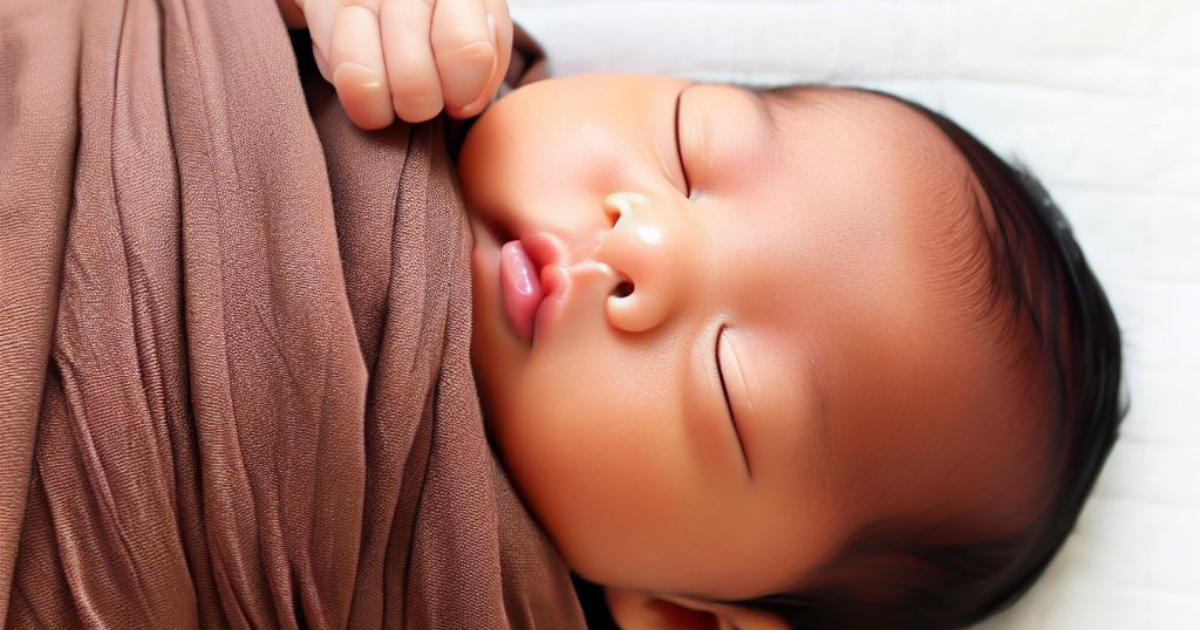
Choosing the right products for your baby is a significant part of parenthood. From diapers to strollers, each decision contributes to your baby’s comfort and well-being. In this section, we’ll provide an in-depth product review to help you make the best choice for your baby.
The Importance of Swaddles
A Swaddle’s Role
Swaddles are more than just blankets; they are tools that provide comfort, security, and a better night’s sleep for your baby. They mimic the cozy embrace of the womb, soothing your little one during those crucial early months.
What to Look for in Swaddles
Fabric Quality
The type of fabric used in a swaddle matters. Look for swaddles made from soft, breathable materials like muslin or jersey cotton. These fabrics are gentle on your baby’s delicate skin.
Size and Fit
Swaddles come in various sizes to accommodate newborns to infants. Ensure that the swaddle you choose is the right size for your baby’s age and weight. A snug fit is essential for safety and effectiveness.
Closure Mechanism
Consider how the swaddle closes. Some swaddles use Velcro, while others have snaps or ties. Choose a closure mechanism that is secure and easy to use, especially during nighttime diaper changes.
Ease of Use
As a sleep-deprived parent, you’ll appreciate swaddles that are easy to put on and take off. Swaddles with simple designs and clear instructions are a lifesaver during those late-night swaddling sessions.
Versatility
Look for swaddles that offer versatility. Some swaddles can double as blankets, stroller covers, or nursing covers. Versatile swaddles save you money and space.
Our Top Picks
1. Halo 100% Cotton Sleepsack Swaddle
The Halo Sleepsack Swaddle is perfect for parents who want the ease of a sleep sack combined with swaddling. It features a secure zipper closure and a 2-in-1 design for easy transitioning.
2. Aden + Anais Essentials Disney Muslin Swaddle Blankets
Aden + Anais swaddle blankets are known for their premium muslin fabric and beautiful designs. They come in various sizes and offer excellent breathability, making them ideal for warm weather.
3. SwaddleMe Original Swaddle
The SwaddleMe Original Swaddle is a budget-friendly option that provides a secure fit with Velcro closures. It comes in various sizes and cute patterns.
Choosing the right swaddle for your baby is a significant decision that affects their comfort and sleep quality. Consider factors like fabric quality, size, closure mechanism, ease of use, and versatility when making your choice. Our top picks offer a range of options to suit different preferences and budgets. Remember that the best swaddle is one that keeps your baby snug, safe, and content, allowing both you and your little one to enjoy peaceful nights and happy days.
HALO 100% Cotton Sleepsack Swaddle:
Product Description:
– The HALO Sleepsack Swaddle is designed to replace loose blankets for safer sleep.
– Made of 100% cotton fabric, soft and slightly stretchy.
– Available in Small size for babies aged 3-6 months (13-18 pounds).
– Features adjustable fasteners, an inverted zipper for easy diaper changes, and a sleeveless design.
– Offers a TOG rating of 1.5, suitable for moderate seasons.
TOG stands for “Thermal Overall Grade” or “TOG rating.” It is a measure used to quantify the insulation or warmth of textiles, particularly bedding and sleepwear. TOG rating indicates how effectively a fabric can trap and retain heat. In the context of baby products like sleep sacks or swaddles, a higher TOG rating indicates a warmer and more insulating product, while a lower TOG rating means it provides less warmth and is suitable for milder temperatures. Parents often choose products with TOG ratings that match the ambient room temperature to ensure their baby stays comfortably warm during sleep without overheating or getting too cold.
Pros:
– Provides a safer sleep environment.
– Made of soft and breathable cotton.
– Adjustable swaddle design.
– Convenient inverted zipper.
– Sleeveless design reduces overheating.
– Recognized as ‘hip healthy.’
Cons:
– May not fit larger or older babies.
– Some babies might outgrow it quickly.
– Priced higher compared to traditional blankets.
Reviews:
– Positive reviews highlight safety and convenience.
– Users appreciate the adjustable design and zipper.
– Some note limitations regarding size and price.
aden + anais Essentials Disney Muslin Swaddle Blankets:
Product Description:
– Made from 100% cotton muslin for breathability and softness.
– Set includes four large blankets with charming Disney Winnie the Pooh prints.
– Versatile for various uses, such as swaddling or stroller covers.
Pros:
– High-quality muslin fabric.
– Large size for extended use.
– Versatile and breathable.
– Features beloved Disney characters.
– Highly rated for quality and durability.
Cons:
– Some find the price relatively high.
– Fabric may become slightly scratchier after washing.
– Personal design preferences may vary.
Reviews:
– Overwhelmingly positive reviews praise softness and versatility.
– Users love the Disney prints and large size.
– Price is a consideration, but quality is acknowledged.
SwaddleMe by Ingenuity Original Swaddle:
Product Description:
– Designed for babies aged 3-6 months, 14-18 pounds, and up to 30 inches.
– Made of 100% cotton for softness.
– Features adjustable wings and hook-and-loop closures.
– Prevents the startle reflex.
– Part of Stage 1 in the SwaddleMe Stages of Sleep.
Pros:
– Suitable for babies aged 3-6 months.
– Made of soft cotton.
– Adjustable for a secure fit.
– Easy-to-use hook-and-loop closures.
– Helps prevent the startle reflex.
Cons:
– Some users report Velcro issues during washing.
– Not suitable for rolling-over babies.
Reviews:
– Positive reviews emphasize ease of use and comfort.
– Users appreciate the quality and affordability.
– Minor Velcro issues during washing are mentioned.
In summary, these three swaddling products offer different features and cater to various preferences. The HALO Sleepsack Swaddle focuses on safety and convenience, aden + anais blankets provide breathability and style, while SwaddleMe offers ease of use and comfort for newborns. User reviews highlight the strengths and, in some cases, minor limitations of each product.
 Editors choice
Editors choice
HALO 100% Cotton Sleepsack Swaddle:
The choice of the best swaddling product among the three, HALO 100% Cotton Sleepsack Swaddle, aden + anais Essentials Disney Muslin Swaddle Blankets, and SwaddleMe by Ingenuity Original Swaddle, depends on your specific needs and preferences. However, considering overall features and user feedback, the HALO Sleepsack Swaddle is often recommended for the following reasons:
1. Safety: The HALO Sleepsack Swaddle is designed with safety in mind, aiming to replace loose blankets in a crib. This feature can reduce the risk of suffocation or Sudden Infant Death Syndrome (SIDS), making it a safe choice for your baby’s sleep.
2. Convenience: It features an inverted zipper that allows for easy diaper changes without the need to unswaddle your baby. This convenience can be a significant time-saver, especially during nighttime changes.
3. Adjustable Design: The swaddle offers a 3-way adjustable design, accommodating various sleep styles, including arms-in, hands-to-face, or one/both arms out. This adaptability can suit your baby’s preferences as they grow.
4. Sleeveless Design: The sleeveless design of the HALO Sleepsack Swaddle reduces the risk of overheating, ensuring that your baby stays comfortable throughout the night.
5. Recognized Safety: The product is recognized as ‘hip healthy’ by the International Hip Dysplasia Institute, further emphasizing its safety features.
6. Positive User Reviews: It has received overwhelmingly positive user reviews, with a high average rating, indicating that many parents trust and appreciate its quality, safety, and convenience.
While the aden + anais Essentials Disney Muslin Swaddle Blankets and SwaddleMe by Ingenuity Original Swaddle have their own merits, the HALO Sleepsack Swaddle’s focus on safety, convenience, and positive user feedback makes it a top choice for parents looking for a reliable and secure swaddling solution for their infants. However, it’s essential to consider your specific needs and preferences when making your final decision.
The Science of Swaddling: Impact on Infant Sleep Patterns and SIDS Prevention
Swaddling, the age-old practice of wrapping infants snugly in blankets or cloths, has been cherished by parents worldwide for its soothing effects. However, the benefits of swaddling extend beyond mere comfort. In this section, we’ll delve into the science behind swaddling, focusing on its impact on infant sleep patterns and its role in preventing Sudden Infant Death Syndrome (SIDS).
Understanding Infant Sleep Patterns
The Importance of Healthy Sleep
Healthy sleep patterns are vital for a baby’s overall development. Quality sleep contributes to physical growth, cognitive development, and emotional well-being. Understanding how swaddling influences sleep is crucial.
Promoting Longer and Deeper Sleep
One of the primary benefits of swaddling is its ability to promote longer and deeper sleep. Swaddled infants experience fewer spontaneous awakenings due to the startle reflex. This leads to more consolidated sleep cycles.
Reduction in Sudden Awakenings
Infants have a strong startle reflex, causing them to wake suddenly due to their own movements. Swaddling suppresses this reflex, leading to more extended stretches of uninterrupted sleep.
Swaddling and SIDS Prevention
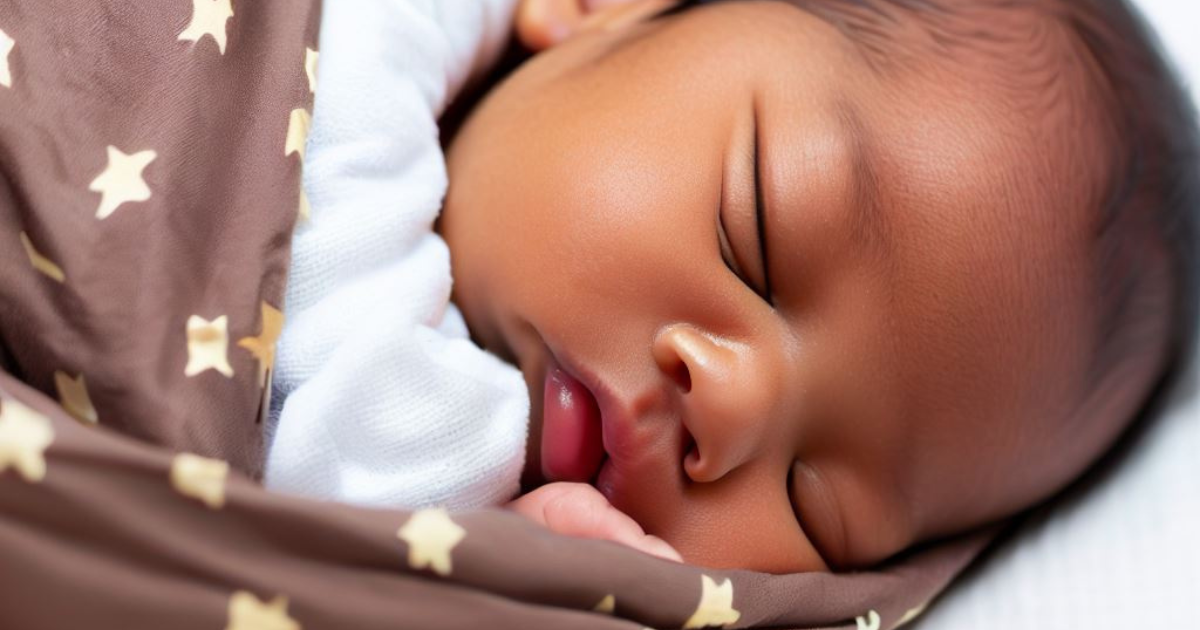
Sudden Infant Death Syndrome (SIDS)
SIDS is a tragic and unexplained phenomenon where an otherwise healthy infant dies suddenly and unexpectedly during sleep. Research has shown that proper swaddling can contribute to reducing the risk of SIDS.
Safe Sleep Practices
The American Academy of Pediatrics (AAP) recommends safe sleep practices to reduce the risk of SIDS. Swaddling can be part of these practices when done correctly.
The Role of Swaddling
Swaddling keeps the baby’s face clear of blankets and other potential hazards. It maintains a safe sleeping position on their back, which is the safest sleep position for infants.
Swaddling vs. Loose Bedding
Compared to using loose bedding, swaddling reduces the risk of the baby accidentally covering their face with blankets, a known risk factor for SIDS.
Safe Swaddling Practices
Proper Technique
To maximize the benefits of swaddling while ensuring safety, use a proper swaddling technique. Leave enough room for the baby’s hips to move and use breathable materials.
Age and Swaddling
As babies grow, their swaddling needs change. It’s crucial to stop swaddling when your baby starts to show signs of rolling over to prevent any safety hazards.
Swaddling isn’t just a time-honored tradition; it’s supported by scientific evidence as a practice that promotes healthier sleep patterns in infants and contributes to SIDS prevention. Understanding how swaddling impacts sleep, combined with safe swaddling practices, empowers parents to provide their babies with the security and safety they need during those crucial early months. When done correctly, swaddling can be a valuable tool in ensuring your baby enjoys restful sleep while minimizing the risks associated with SIDS.
FAQs
1. Is swaddling safe for all babies?
Swaddling is generally safe for healthy full-term infants. However, it may not be suitable for premature babies or those with certain medical conditions. It’s essential to consult with your pediatrician to determine if swaddling is appropriate for your baby’s specific needs.
2. When should I stop swaddling my baby?
Most experts recommend discontinuing swaddling when your baby starts showing signs of rolling over, which usually occurs around 2 to 4 months of age. Once your baby can roll over, swaddling can restrict their movement and pose a safety risk.
3. How do I swaddle my baby correctly?
To swaddle your baby correctly, lay a swaddle blanket flat, fold the top corner down, place your baby on their back with their neck on the fold, and wrap one side of the blanket snugly around your baby’s body, tucking it under their back. Then, fold up the bottom of the blanket and wrap the other side snugly. Ensure your baby’s hips can move and that the swaddle is not too tight around their chest.
4. Can swaddling help my baby sleep better?
Swaddling can often help babies sleep better by providing a cozy, secure feeling similar to being in the womb. It can also prevent the startle reflex, allowing for longer periods of uninterrupted sleep. However, every baby is different, and swaddling may not work for all infants.
5. What should my baby wear under the swaddle?
It’s essential to dress your baby appropriately under the swaddle to prevent overheating. In general, a light, breathable onesie or pajamas should suffice, depending on the room temperature. Always check your baby’s neck or back to ensure they are not too hot or too cold.
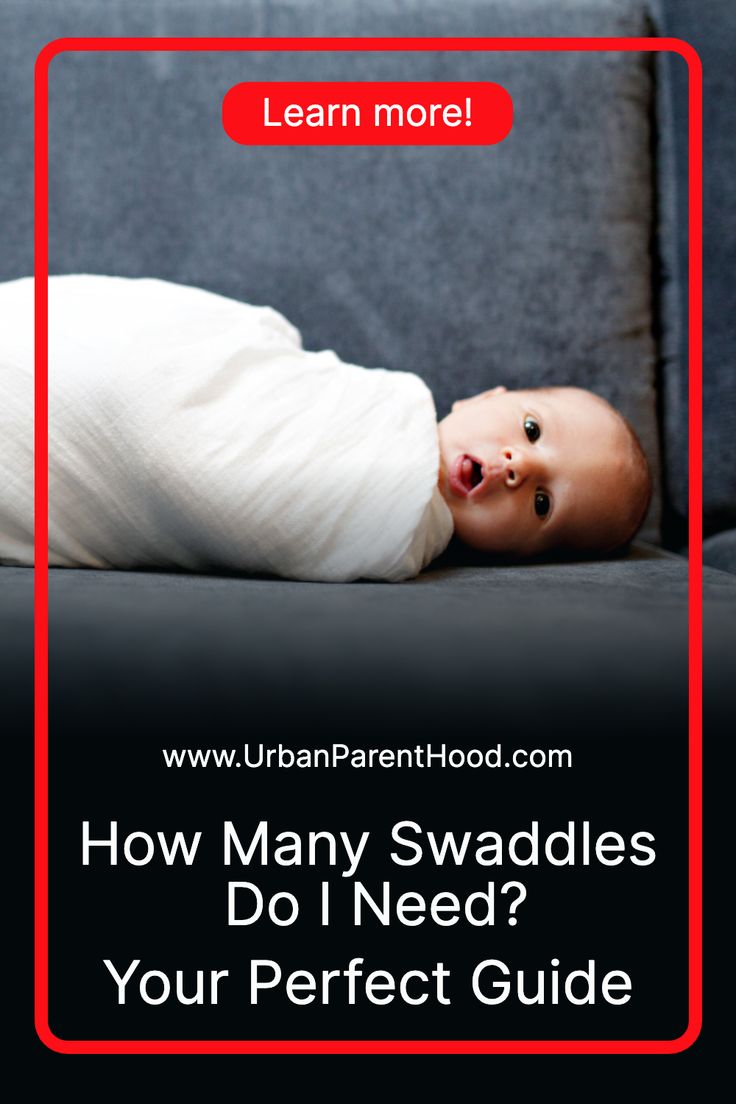
*We may earn a commission from purchases made through our links, at no cost to you. This does not affect our product recommendations. Please see our disclosure to learn more.

